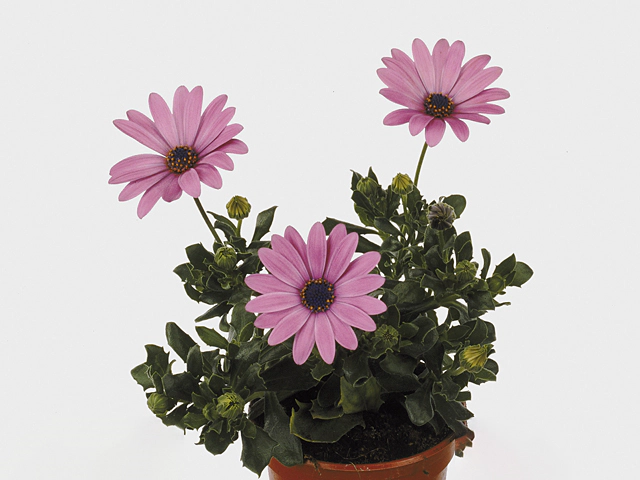Dimorphotheca

Dimorphotheca, commonly known as Cape Marigold, is a beautiful flowering plant that originates from the Cape region of South Africa. This stunning plant is a favorite among garden enthusiasts due to its vibrant colors and ability to thrive in various conditions.
The Cape Marigold belongs to the Asteraceae family, which includes plants such as daisies and sunflowers. It is characterized by its daisy-like flowers that come in an array of colors including yellow, orange, pink, and purple. The flowers have a prominent dark center, which adds to their visual appeal.
One of the great advantages of the Cape Marigold is its ability to adapt to different environments. It can be grown as an annual in colder climates or as a perennial in warmer regions. This versatility makes it a popular choice for gardeners worldwide.
Cape Marigolds prefer full sun but can also tolerate partial shade. They require well-drained soil and should be watered regularly, especially during dry periods. These plants have a tendency to spread rapidly and can create a beautiful blanket of colorful flowers in a garden bed or container.
In addition to their aesthetic value, Cape Marigolds also serve practical purposes. They are often used as ground cover in landscaping projects as they effectively smother weeds and help reduce soil erosion. Their extensive root system helps promote soil health and water retention.
Another interesting aspect of Cape Marigolds is their ability to attract bees and butterflies. The nectar-rich flowers provide a valuable food source for these important pollinators, contributing to the overall health and biodiversity of the garden.
Cape Marigolds can be easily propagated from seeds, making them an ideal choice for beginner gardeners. The seeds can be sown directly into the soil after the risk of frost has passed, or they can be started indoors and transplanted later. With proper care, the plants will typically flower within a few months.
To keep Cape Marigolds looking their best, it is recommended to deadhead the spent flowers regularly. This encourages the plant to produce more blooms and prolongs the flowering period. Additionally, removing any damaged or diseased foliage will help prevent the spread of any potential diseases.
In conclusion, the Dimorphotheca, or Cape Marigold, is a striking plant that adds a burst of color to any garden. Its ability to tolerate different growing conditions, attract pollinators, and serve practical purposes makes it a valuable addition to any landscaping project. Whether you are a seasoned gardener or just starting out, the Cape Marigold is sure to delight with its vibrant flowers and low maintenance requirements.
Market availability index by month:
| Jan. | Feb. | Mar. | Apr. | May | Jun. | Jul. | Aug. | Sep. | Oct. | Nov. | Dec. |
|---|---|---|---|---|---|---|---|---|---|---|---|
| - | 1 | 2 | 3 | 4 | 2 | 1 | 1 | 1 | 1 | 1 | 1 |